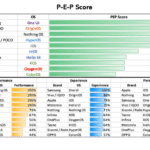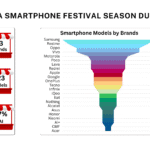The ‘capillarisation’ of segments has resulted in cohorts. Serving these cohorts as per their needs and expectations is the true premiumisation that will add reciprocal value for both brands and the consumers.
In the old era of business, industry and firm by economic definition was very much straightforward. A firm would be a single entity making goods or services and the collection of these firms would make up an industry. After marketing and strategy blended with economics, we saw a new era of business emerging. The first key outcome of this blend was the creation of segmentation which automatically defined the area and scope of operations. Today, in a very data driven environment, this has further resulted in ‘capillarisation’ of market segments resulting in well-defined and worth opportunity cohorts.
Depending on the nature of the product or service, the flexibility of segmentation and cohortisation is defined. This means in today’s time one can really save any product or service, or even at times an entire industry from commoditisation. In old days, this was the death of a brand!
Today’s businesses are not set up or started in the same old fashion. In old times, any entrepreneur or promoter would get interested in a product or service and then most of the business models would operate on push models. Marketing would aid in the form of creating awareness and recall. The modern-day businesses are developed based on well-articulated needs and gaps. These needs and gaps are identified through a rigorous analysis of data and insights defining a well bordered cohort.
While there have been techniques of segmentation. Most of them have historically been based on pricing. A brand would exist either to serve a few segments or focus exclusively on a segment that could range from a large volume mass segment to an ultra-luxurious niche segment. The value of course would be different as the brands would get an opportunity to define the elements and ingredients of the product or service depending on the extent of money, they could spend on creating a product or service. This is broadly how segmentation would work.
This still is the predominant way of defining the market. The shares of each firm or brand defined by the volume or value still carry some significance. This is because the products or services are significantly overlapping unless there is a patented or very exclusive input available to a particular brand that others cannot leverage. In technology domain, especially after the emergence of digital technologies, these have become exceedingly difficult to achieve. Even if there is a patent, the advanced R&D capabilities across industries eventually do produce an alternative in production or design where the product serves similar purpose. So, maintaining exclusivity is very difficult. At most one or a few brands may be able to create this exclusivity. For instance, what Apple has created in personal electronics or Google has created for Internet. Even while Google is still a generic segment agnostic technology company, Apple still is relevant for the affluent population globally.

In the present scenario when market is getting hyper segmentised or we are witnessing cohorts getting defined after which specific companies and brands within the broader umbrella of ‘industry’ focus and invest all their energies, their performance comparison on one scale doesn’t make too much of a sense. If I borrow an example from the smartphone industry, it would be myopic to compare Asus with Samsung. Or for that matter, Vivo with Apple. While all these brands are making smartphones, their cohorts, not segments are very well structured and defined. Even where two brands like Realme and Redmi are very overlapping in terms of offerings and the segments they target, the cohorts are still different. A user who buys Realme for very specific reasons that Realme as a brand answer for the cohort it serves, is unlikely to choose Redmi even if the product is same and relatively at lesser price. That said, it does not mean there is strong loyalty and these brands do not need to worry about the competition. It is because while users can definitely be plotted in a specific cohort, brands do not take this risk of getting associated with a specific cohort or a few cohorts. This makes them risky in a way of wrapping up the opportunity or addressable market. So, while brands do have a cohort in mind, they don’t show up the confidence of going loud about it and still prefer loosely positioning themselves hoping to get a pie of adjacent opportunities. This is a dilemma that many brands love to live in. It, however, rarely fetches any great results. Going with a precision into the market is much more rewarding and fulfilling!
Today not just services but entire brands are created adopting a data driven approach. The data driven approach is nothing but identifying the cohort, the current opportunity and the growth prospects. Then the brand goes for a product-market fit and is operational, addressing the need. This has been happening in the smart devices industry for a while now. However, not much talked about. This is the reason why we see the market shares stagnated, especially by volumes. The revenue market shares are still settling as the brands are able to get incremental revenue by upgrade and replacement opportunity within the cohorts they operate.
It is in the interest of respective brands to come forward and explicitly define and talk about their cohorts of interest. That would define a lot of things to follow. For instance, which channel to sell, how to communicate and engage, and of course what would be the core and addon value proposition. This will lead to profit maximisation and give a sustainable revenue growth to each of these brands without diluting their focus and energy in areas where they don’t have a great chance. There are different needs and expectations of user cohorts and if brands focus on them, they can not only earn more but create millions of loyal customers. This is what should be the basis of premiumisation for brands. Not just for smartphones or other smart devices, but brands across different industries. So lets not bother much about the market share but focus on the cohort that we can serve the best and create more happy and delighted customers who will pay more.





